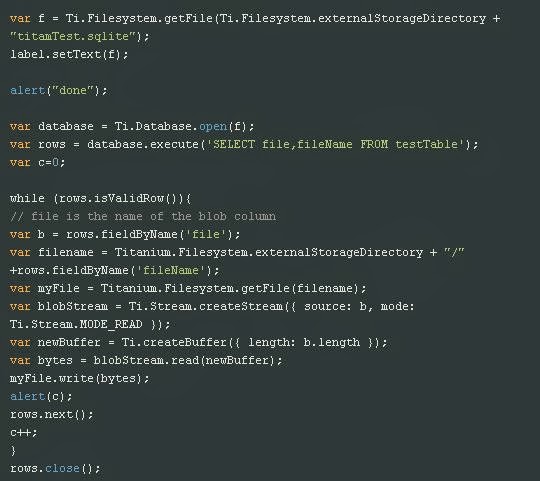How Data Can Extract, Data Extraction
in sqllite
Data extraction is the process or the act of getting the
record out of (usually un-structured or poorly structured database)
data source for advance data storage or data processing (migration of
data). The import into the intermediate system of extracting is thus
normally followed by transformation of data and probably the element
of meta data prior to export to other stages in the work flow of
data.
Normally, the data extraction term is applied when (researched)
data is imported first into our computers from primary source, like
measuring and recording the device. Electronic devices of Today will
Normally present the electrical connectors (e.g. USB) via what 'raw
data' can be streamed under the PC.
Typical UN-structured sources of data contains the website pages,
documents, emails, scanned text, PDFs, spool files, mainframe reports
etc. Extracting data from such sources of unstructured has mature
into the challenge of considerable technical where the data
extraction for historically has had to deal with in the physical
hardware formats changes, the current data extraction deals majority
with extracting the data from such unstructured data sources, and
from various software. This data extraction of rowing process from
the website is referred to as Website scraping.
The work of adding the structures to unstructured data takes a
multiple forms
- Using the pattern of text matching like as regular expressions to determine large scale or small structures e.g. record in the reports and their related data from footers and headers;
- Using a table based approaches to determine the common section within the limited no of domains e.g. in the resumes of emailed, previous work experience, identifying skills, qualifications etc. with the help of standard set of normally used headings (such would differ from languages to languages), e.g. Education can be recovered under Education / Qualification / Courses;
- With the help of text Analytics to effort to realize the text
and link it to another informations.
Defining the Bounce Event Extract File
The bounce event extract file displays all of the soft and hard bounces that generated according to date ranges. The This report events can be related to all delivered for subscribers on the list or related to a specific send.The Bounce Event Extract File includes the information given below:
| Key Column | Format Design | Description of Result |
|---|---|---|
| SendID | Integer | Meets the delivered that output in the bounce event. |
| SubscriberKey | String (100) | Meets the subscribers. If We don't determine required subscribers with a key of subscribers, this values are the same as the email addresses. |
| EventDate | Short Date Time | The date the bounce event generated. |
| EventType | String (6) | Recognizes the type of event. For such extract file, this field includes the Bounce. |
| BounceCategory | Integer |
Recognizes the bounce type.
Valid values contains:
|
| SMTP Code | Short Integer | The SMTP code associated to the bounce. Valid value available at given location: http://www.greenend.org.uk/rjk/2000/05/21/smtp-replies.html |
| SMTP Reason | Text | The detailed cause for the bounces |
Data Extraction in Sqllite:
As we have red all the comment, we just know a blob field can not
be come back. So I pre-encoded (base64) our blobs and we input the
base64 encoded output in our db sqlite as TEXT.
Then, after executing the query the db, we base64 decode the
output (that should be a blobs).
Anything looks to function except for the fact that we can not
view any file in our SD... So, the given below code does not generate
any physical files:
 |
| How Data Can Extract |
Solution of Above code;
var fl = Ti.Filesystem.getFile(Ti.Filesystem.externalStorageDirectory + "titamTest.sqlite ");
label.setText(fl);
var database = Ti.Database.open(fl);
var rows = database.execute('SELECT blobToBase64,filelName FROM testlTable');
while (rows.isValidRow()){
var bl = rows.fieldByName('blobToBase64');
var blobl = Titanium.Utils.base64decode(b);
alert(blobl);
var filename = Titanium.Filesystem.externalStorageDirectory + "/"+rows.fieldByName('filelName');
var myFilel = Titanium.Filesystem.getFile(filelname);
var blobStreaml = Ti.Stream.createStream({source:blobl, mode:Ti.Stream.MODE_READ});
var newBufferl = Ti.createBuffer({length:blobl.length});
var bytesl = blobStream.read(newlBuffer);
myFile.write(bytesl);
rows.next();
}
rows.close();
More details for Data Extraction can be
found on -:
http://help.exacttarget.com/en/documentation/exacttarget/tracking/data_extract/










No comments:
Post a Comment